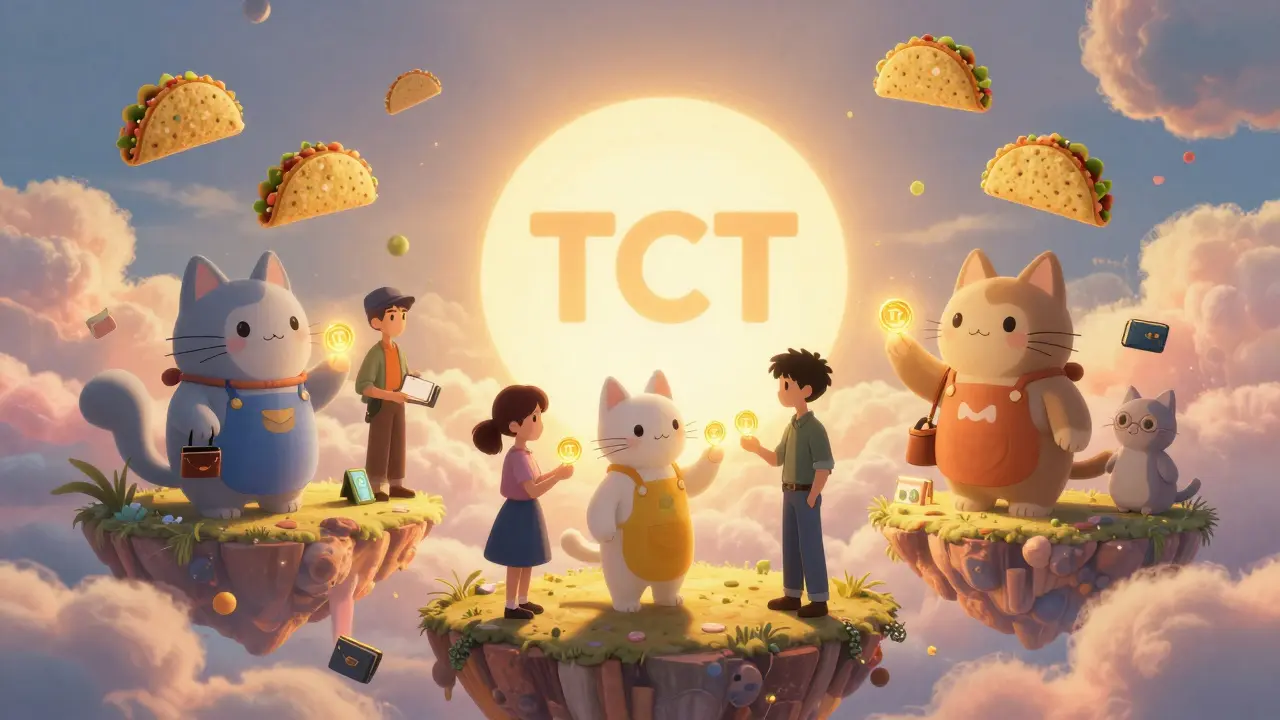ZIGChain Staking Calculator
Calculate Your ZIG Rewards
ZIGChain offers 5%–12% APY staking rewards. Calculate potential earnings based on your holdings.
Your Estimated Rewards
ZIGChain isn't just another cryptocurrency. It’s a blockchain built for people who want to invest smarter, not harder. If you’ve ever felt left out of crypto because you don’t understand smart contracts or don’t have time to monitor markets 24/7, ZIGChain was made for you. It doesn’t try to be the fastest or the biggest. Instead, it focuses on one thing: making professional-grade wealth management tools available to anyone with a phone and an internet connection.
Where ZIGChain Comes From
ZIGChain didn’t start as a blockchain. It began as Zignaly, a social investment platform launched in 2018 that let users copy trades from experienced investors. By 2023, it had over 600,000 registered users, mostly from places like Brazil, Indonesia, and Nigeria. The platform was licensed by South Africa’s Financial Sector Conduct Authority (FSCA), meaning it followed real financial rules-not just crypto wild west rules. In 2025, the team behind Zignaly made a big move. They shut down the centralized version and rebuilt everything on a new blockchain called ZIGChain. The goal? To take the best parts of Zignaly-simple investing, trusted signals, regulated compliance-and make them unstoppable, transparent, and owned by users, not a company.What Is the ZIG Token?
The ZIG token is the fuel of the ZIGChain network. Think of it like a combination of cash, voting rights, and access pass-all in one. As of November 10, 2025, there are 1.4 billion ZIG tokens in circulation out of a total 2 billion. Each ZIG is worth around $0.08 to $0.09, giving the project a market cap of just over $114 million. You can use ZIG to:- Pay for transaction fees on the network
- Stake it to earn rewards (5%-12% APY)
- Vote on future upgrades to the protocol
- Access premium investment tools built on ZIGChain
How ZIGChain Works Under the Hood
ZIGChain runs on the Cosmos SDK, the same toolkit used by chains like Cosmos Hub and Osmosis. This means it can talk to other blockchains easily-something Ethereum can’t do natively. It uses CosmWasm smart contracts, written in Rust, which are more secure and efficient than older languages like Solidity. The network uses a hybrid consensus system: part Proof-of-Stake, part Delegated Proof-of-Stake. This lets it process blocks every 5-7 seconds and confirm transactions in about 6 seconds. That’s slower than Solana but faster than Ethereum after its latest upgrade. It also connects to Ethereum and 47 other Cosmos-based chains through the IBC and Wormhole bridges. So you can send Bitcoin (wrapped), USDT, or SOL into ZIGChain and use them in investment strategies-all without leaving the ecosystem.
The Wealth Management Engine
This is where ZIGChain stands out. Most blockchains are like blank slates. Developers build everything from scratch. ZIGChain comes with pre-built tools called the Wealth Management Engine. These are like LEGO blocks for finance:- Automated portfolio rebalancing
- Stop-loss and take-profit triggers
- Dividend reinvestment bots
- Multi-asset yield aggregators
Who Uses ZIGChain?
As of November 2025, there are 30,330 unique wallets holding ZIG. Most users aren’t crypto experts. They’re people in Southeast Asia, Latin America, and Africa who want to grow their savings but don’t trust banks or local stock markets. The platform’s biggest strength? Education. ZIGChain’s “Quest” program is a gamified tutorial that teaches users how to set up wallets, stake tokens, and use investment tools. Over 78% of positive reviews on Trustpilot mention how helpful this was. People who didn’t know what a wallet was a month ago are now managing their own crypto portfolios. There’s also a new ZIGCard-launched in October 2025-that lets you spend ZIG anywhere Visa is accepted. It’s a Visa debit card linked to your ZIGWallet, and it gives you 1.2% cashback. Around 38,000 people have signed up already.Where ZIGChain Falls Short
ZIGChain isn’t perfect. Here’s what’s holding it back:- Liquidity is thin. On most exchanges, the order book for ZIG is shallow. If you try to sell $10,000 worth, you’ll likely lose 1.7% to 3.2% in slippage. That’s risky for bigger traders.
- Developer adoption is low. Only 87 active repos on GitHub. Compare that to Ethereum’s 6,800. Fewer developers mean fewer apps, fewer tools, slower growth.
- It’s still too complicated for beginners. A user study found you need 37% more steps to do basic tasks than on eToro or Binance. The interface isn’t bad-it’s just not polished yet.
- Centralization risk. Over 42% of ZIG tokens are held by the foundation and early investors. That’s a red flag for decentralization purists.

Is ZIGChain Worth It?
If you’re looking for a high-risk, high-reward gamble like Shiba Inu or Dogecoin, ZIGChain isn’t it. But if you’re looking for something that tries to fix real problems-like making investing fairer, safer, and easier for regular people-then yes, it’s worth paying attention to. It’s the only blockchain built from the ground up to serve people who’ve been ignored by traditional finance and too intimidated by crypto. Its connection to Zignaly gives it credibility. Its focus on regulated wealth tools gives it a niche. And its low market cap means there’s room to grow-if it can fix its liquidity and user experience issues. Analysts at Messari think ZIG could triple in value by 2027 if it hits 100,000 daily active users. That’s ambitious. But given that it already has over 30,000 holders and a growing card program, it’s not impossible.What’s Next for ZIGChain?
The roadmap is clear:- Phase 1 (Done): Mainnet launched in July 2025.
- Phase 2 (Q1 2026): Connect to 15 more blockchains, including Solana and Polygon.
- Phase 3 (Q3 2026): Launch SEC-qualified tokenized assets-think real estate, bonds, or ETFs on-chain.
Final Thoughts
ZIGChain isn’t trying to beat Bitcoin or replace Ethereum. It’s trying to do something no other chain has done: bring Wall Street-style investing to Main Street-without the fees, the gatekeepers, or the jargon. It’s still early. The network is young. The community is small but passionate. The tech works. The vision is solid. If you’ve ever wanted to invest in crypto but felt like you needed a finance degree to get started, ZIGChain might be the bridge you’ve been waiting for.Is ZIGChain a good investment?
ZIGChain isn’t a get-rich-quick coin. It’s a long-term infrastructure play. If you believe in democratizing finance and think people deserve better tools than centralized apps like eToro or Robinhood, then ZIG has potential. But it’s risky. Low liquidity, low developer adoption, and token centralization are real concerns. Only invest what you can afford to lose.
Can I stake ZIG tokens?
Yes. You can stake ZIG directly through the ZIGWallet app or via supported validators. Minimum stake is 10 ZIG. Rewards range from 5% to 12% APY, depending on how many people are staking. Rewards are paid out daily and are automatically compounded.
How do I buy ZIG coin?
ZIG is listed on exchanges like Gate.io, MEXC, and Bitrue. You can buy it with USDT, BTC, or ETH. Avoid buying on small, unknown exchanges-liquidity is low, and slippage can be high. Always use a non-custodial wallet like ZIGWallet or Keplr to store your tokens safely.
Is ZIGChain safe?
The network itself is secure-it uses proven Cosmos tech and has 120 validator nodes. But safety also depends on you. Don’t share your seed phrase. Don’t use unverified third-party dApps. And be careful when bridging tokens-gas fee errors during cross-chain transfers are the most common issue reported by users.
What’s the difference between ZIGChain and Zignaly?
Zignaly was a centralized platform that let you copy trades. ZIGChain is the decentralized blockchain that now powers the same functionality-but without a company in the middle. Zignaly still exists as a licensed entity, but all new features now run on ZIGChain. Think of Zignaly as the brand and ZIGChain as the engine.






